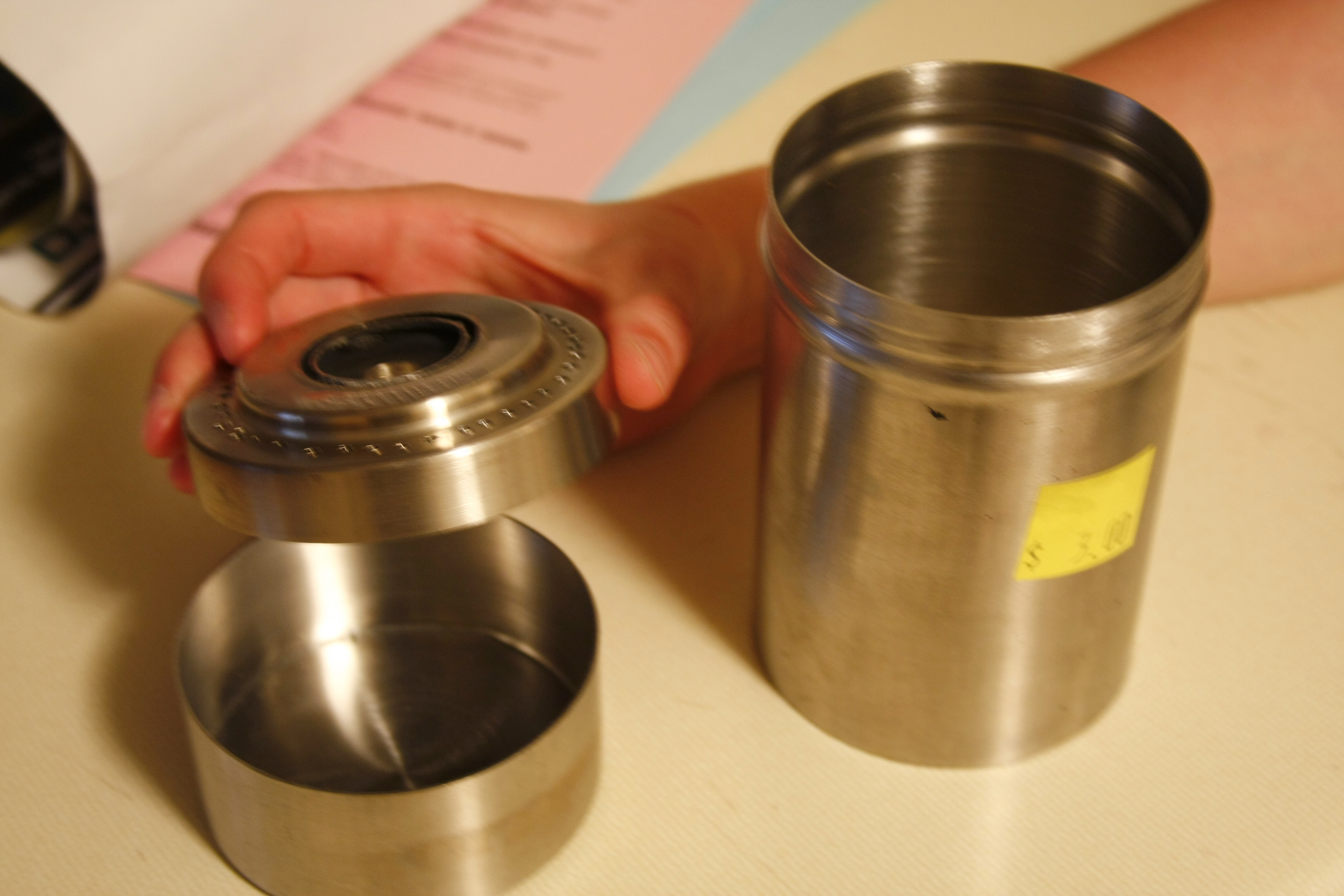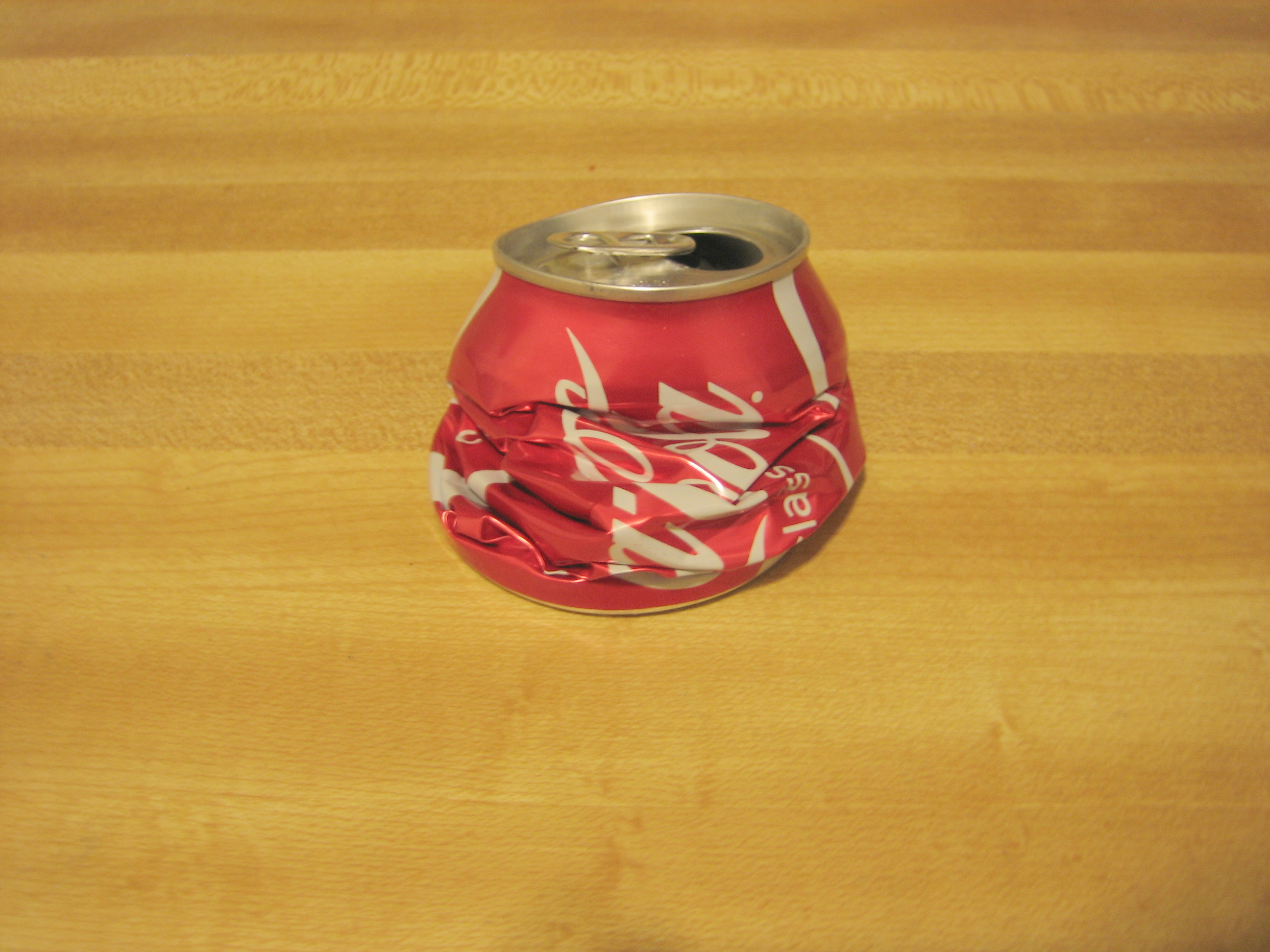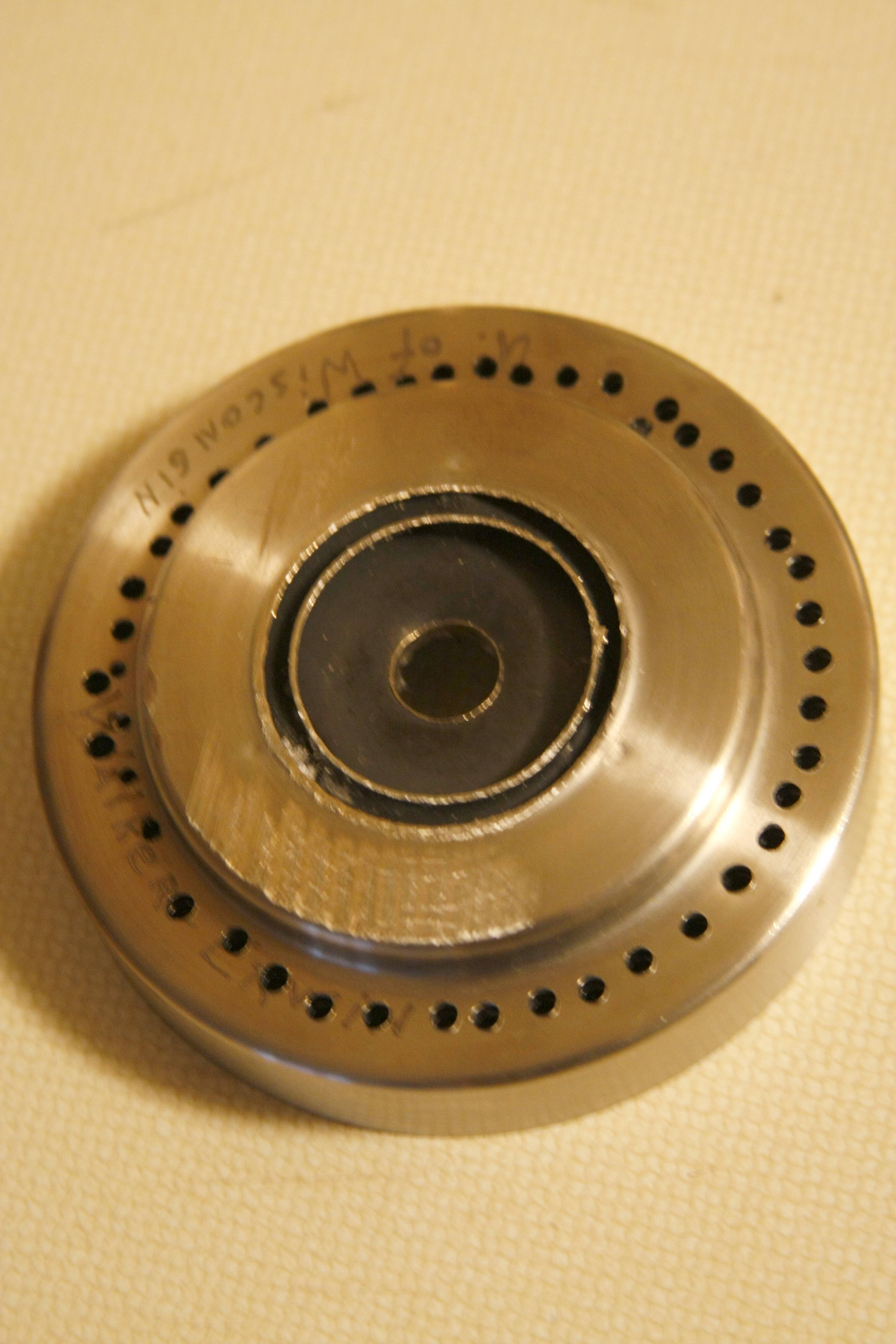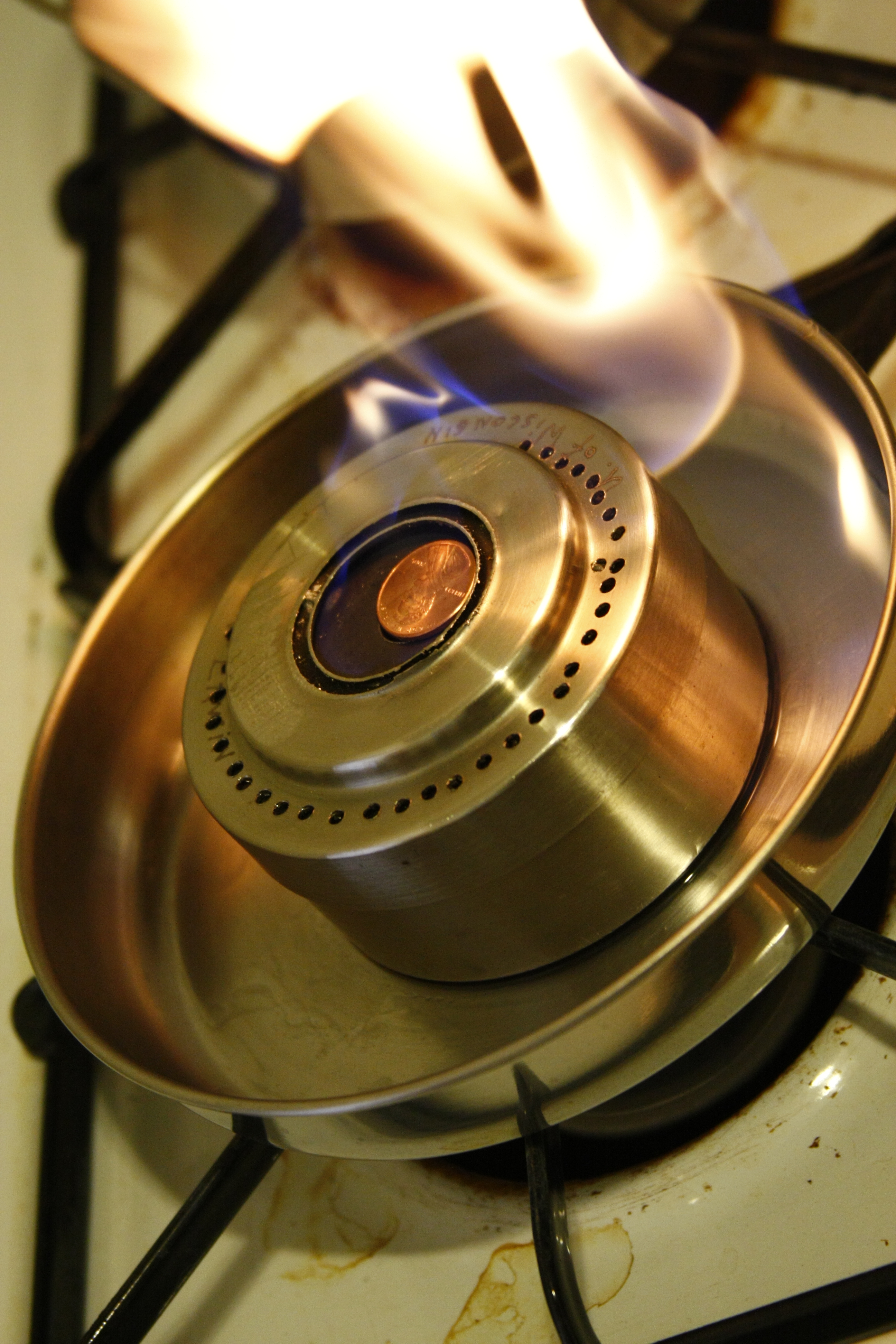Light-weight Sturdy Backpacking Stove
by DeltaS in Outside > Camping
47986 Views, 77 Favorites, 0 Comments
Light-weight Sturdy Backpacking Stove



Three-photo summary:
This stove is inexpensive, light weight, compact, and portable. Unlike the soda can variety (available all over the web), this stove is made from a discarded film development tank and extremely sturdy! (We snapped two drill bits while manufacturing this stove.)
Cost: $3 (commercial models: $15 to $150)
Weight: 4 oz, may reduce to < 3 oz with judicious cutting (commercial models: 3 oz to 30 oz)
Dimensions: 4.5 cm in height, 8.5 cm in diameter (fuel reservoir included)
Fuel Recommendation: 70%-90% rubbing alcohol
Energy Efficiency: 1/4 cup of 91% alcohol boils about 2 cups of water
This stove is inexpensive, light weight, compact, and portable. Unlike the soda can variety (available all over the web), this stove is made from a discarded film development tank and extremely sturdy! (We snapped two drill bits while manufacturing this stove.)
Cost: $3 (commercial models: $15 to $150)
Weight: 4 oz, may reduce to < 3 oz with judicious cutting (commercial models: 3 oz to 30 oz)
Dimensions: 4.5 cm in height, 8.5 cm in diameter (fuel reservoir included)
Fuel Recommendation: 70%-90% rubbing alcohol
Energy Efficiency: 1/4 cup of 91% alcohol boils about 2 cups of water
Find the Right Canister


Tools: band saw, ruler
We found a film development tank with a lid among a pile of lab supplies in the UW-Madison SWAP shop. With its 1-mm thick wall, it's sturdy all right! We just need to saw off the top. 4 cm from the bottom gives more room than we need to store the fuel for cooking. 2 cm would have done just fine and saved an extra ounce of weight -- it wouldn't have been safe to cut though.
4 cm tall: up to 1 cup of fuel
2 cm tall: up to 1/2 cup of fuel
We found a film development tank with a lid among a pile of lab supplies in the UW-Madison SWAP shop. With its 1-mm thick wall, it's sturdy all right! We just need to saw off the top. 4 cm from the bottom gives more room than we need to store the fuel for cooking. 2 cm would have done just fine and saved an extra ounce of weight -- it wouldn't have been safe to cut though.
4 cm tall: up to 1 cup of fuel
2 cm tall: up to 1/2 cup of fuel
Drill the Vents


Tool: drill press
Like making the vents of a gas stove, drill small holes all the way around the lid of the canister. In order to control the burning and ventilation, we also drilled a big hole in the center, which can be covered up by a penny.
Now you can put the lid over the bottom of the canister that was sawed off earlier.
Like making the vents of a gas stove, drill small holes all the way around the lid of the canister. In order to control the burning and ventilation, we also drilled a big hole in the center, which can be covered up by a penny.
Now you can put the lid over the bottom of the canister that was sawed off earlier.
Light the Stove




Tools: matches, metal pan
Pour 70% - 90% rubbing alcohol into the canister. Then put on the lid (a penny may be used to cover up the big hole in the center of the lid to slow down the burn). The burn time depends on the size and number of holes on the lid, the amount of fuel in the canister, as well as air ventilation.
Place the canister in a backpacking cooking pan and pour a few teaspoons of alcohol in the pan. The alcohol won't need to coat the bottom of the pan. Light the alcohol in the pan, not in the canister.
As the alcohol in the pan burns off, the alcohol in the canister will evaporate and eventually catch on fire.
Cook. Let's eat!
Pour 70% - 90% rubbing alcohol into the canister. Then put on the lid (a penny may be used to cover up the big hole in the center of the lid to slow down the burn). The burn time depends on the size and number of holes on the lid, the amount of fuel in the canister, as well as air ventilation.
Place the canister in a backpacking cooking pan and pour a few teaspoons of alcohol in the pan. The alcohol won't need to coat the bottom of the pan. Light the alcohol in the pan, not in the canister.
As the alcohol in the pan burns off, the alcohol in the canister will evaporate and eventually catch on fire.
Cook. Let's eat!
*Spoof Reel*


The 100-Hour Challenge ( http://www.wiscontrepreneur.org ) team: Megan Britson, Gene Shiau, and Kris Ugarriza.